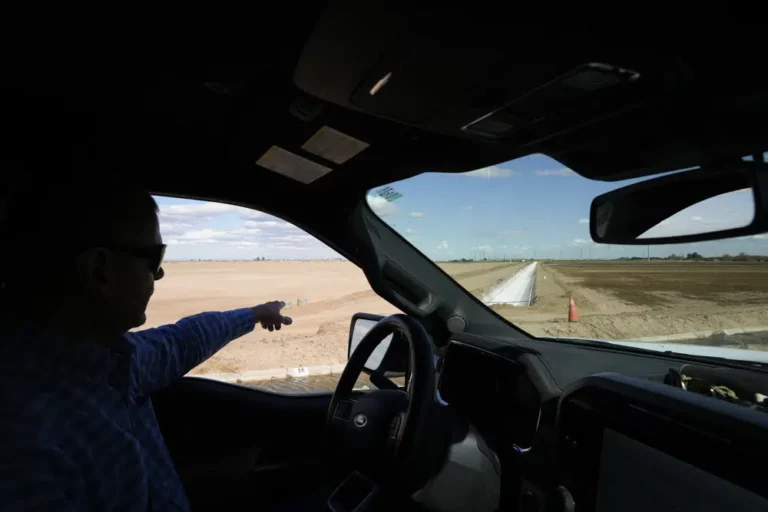Photo: Tom Brundy points to a newly built irrigation canal on one of the fields at his farm Tuesday, Feb. 28, 2023, near Calexico, Calif. Brundy, an alfalfa grower in California’s Imperial Valley, thinks farmers reliant on the shrinking Colorado River can do more to save water and use it more efficiently. But one practice that’s off-limits for Brundy is fallowing — leaving fields unplanted to spare the water that would otherwise irrigate crops. (AP Photo/Gregory Bull)
WASHINGTON (AP) — Tom Brundy, an alfalfa grower in California’s Imperial Valley, thinks farmers reliant on the shrinking Colorado River can do more to save water and use it more efficiently. That’s why he’s installed water sensors and monitors to prevent waste on nearly two-thirds of his 3,000 acres.
But one practice that’s off-limits for Brundy is fallowing — leaving fields unplanted to spare the water that would otherwise irrigate crops. It would save plenty of water, Brundy said, but threatens both farmers and rural communities economically.
“It’s not very productive because you just don’t farm,” Brundy said.
Many Western farmers feel the same, even as a growing sense is emerging that some fallowing will have to be part of the solution to the increasingly desperate drought in the West, where the Colorado River serves 40 million people.
“Given the volume of water that is used by agriculture in the Colorado River system, you can’t stabilize the system without reductions in agriculture,” said Tom Buschatzke, director of the Arizona Department of Water Resources. “That’s just math.”
The U.S. Bureau of Reclamation is looking at paying farmers to idle some fields, many in the vast Imperial Valley in California and […]
Full article: In dry West, farmers balk at idling land to save water

